Tom Brown Jr., a famous tracker and naturalist, said,
“We learned to be patient observers like the owl. We learned cleverness from the crow, and courage from the jay, who will attack an owl ten times its size to drive it off its territory. But above all of them ranked the chickadee because of its indomitable spirit.”
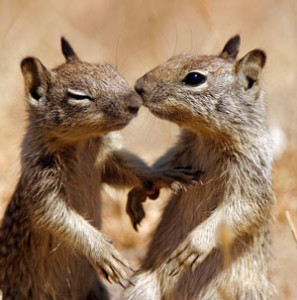 No matter how big or small, meek or powerful, fearless or timid, we learn from the animals that surround us on a daily basis. The abundance of squirrels down the hill may make students think that because they are so common, that there is nothing interesting to learn about their habits. However, these squirrels exhibit some super-hero like powers that can be fascinating to anyone.
No matter how big or small, meek or powerful, fearless or timid, we learn from the animals that surround us on a daily basis. The abundance of squirrels down the hill may make students think that because they are so common, that there is nothing interesting to learn about their habits. However, these squirrels exhibit some super-hero like powers that can be fascinating to anyone.
Here’s some good information about two of these resilient animals that use their adaptations to their advantage in the natural environment: the Western Gray Squirrel and the California Ground Squirrel.
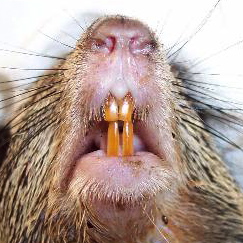 Most of the time we see squirrels standing on their hind legs chewing on an acorn. Their incisors will grow up to 6 inches per year, but their constant gnawing keeps them blunt to not to affect their eating habits.
Most of the time we see squirrels standing on their hind legs chewing on an acorn. Their incisors will grow up to 6 inches per year, but their constant gnawing keeps them blunt to not to affect their eating habits.
The arboreal Western Gray Squirrel lives in trees most of its life and uses its tail like a parachute if it happens to lose its balance when sprinting and jumping from branch to branch. These squirrels are not territorial and families will move through up to three dreys (nests) a day when searching for food.
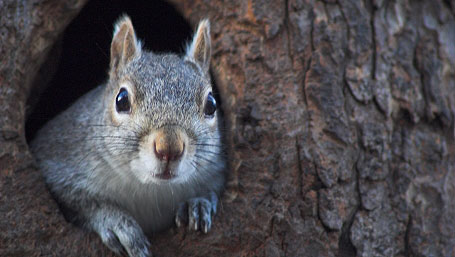
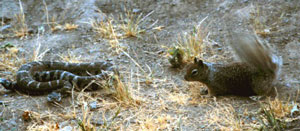 California Ground Squirrels’ defense mechanisms keep it safe when hunting for food on the forest floor. If the squirrel encounters a rattlesnake, it will kick sand at the snake or harass it in some other way to determine the snake’s size and activity level.
California Ground Squirrels’ defense mechanisms keep it safe when hunting for food on the forest floor. If the squirrel encounters a rattlesnake, it will kick sand at the snake or harass it in some other way to determine the snake’s size and activity level.
Also, a squirrel will superheat by swishing its tail around; for a snake, which uses its pit organ to detect heat, the infrared signal will show that the squirrel seems to be too big, too swift, and not something to be eaten.
In order to protect its young, a California Ground Squirrel will actually chew the skin of a rattlesnake, spit it out, and then lick herself and her pups to make a snake think that it is their own kind.
Teachable Moment
 At High Trails, the winter season brings in new and exciting ways to ponder the existence of life for these animals in a cold and seemingly lifeless environment.
At High Trails, the winter season brings in new and exciting ways to ponder the existence of life for these animals in a cold and seemingly lifeless environment.
When the ground is covered in 8”-10” of snow, we cannot see the forest floor. However, the endless slue of tracks from animals that wake from a state of torpor in search of food dot, criss-cross, and zig-zag purposefully across the frozen landscape.
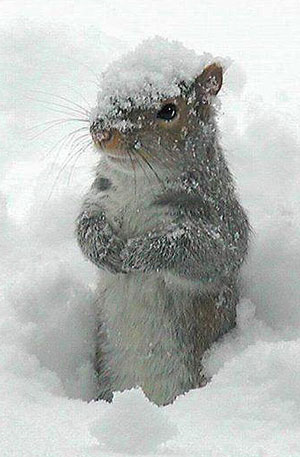 When walking the snow and your group stumbles upon a set of tracks or scat, it can be used as a great opportunity for them to get a sense of the animal. Its size, how it walks, what it eats, and how fast it moves can be determined without ever seeing the animal.
When walking the snow and your group stumbles upon a set of tracks or scat, it can be used as a great opportunity for them to get a sense of the animal. Its size, how it walks, what it eats, and how fast it moves can be determined without ever seeing the animal.
With such a small amount of snow and warm temperatures,these tracks attempt to flirt with the casual observer, asking one to follow it along its path back home. Without even moving, the students’ eyes can trace the squirrel’s path to the base of a giant Black Oak or a rotting hole of a Grandpa Tree. This is the most obvious way to grab the students’ attention and ask them where the squirrel could be going and why, when they think these tracks were made, and how fast was it moving.
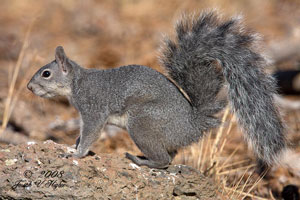
From parachutes to cloaking devices, squirrels can help a student to see the amazing in the common things in the wilderness. When an instructor can show a set of tracks to their students, explain what the animal was doing, and then provide a set of interesting facts that the students would potentially never hear, they help the students to learn more than they can ever imagine. The story of the tracked animal will make their heart skip a beat, their nerves tingle and their imaginations wander. Help your students learn from these tracks just as Tom Brown learned from the animals he observed.
At High Trails Outdoor Science School, we literally force our instructors to write about elementary outdoor education, teaching outside, learning outside, our dirty classroom (the forest…gosh), environmental science, outdoor science, and all other tree hugging student and kid loving things that keep us engaged, passionate, driven, loving our job, digging our life, and spreading the word to anyone whose attention we can hold for long enough to actually make it through reading this entire sentence. Whew…. www.dirtyclassroom.com

Comments are closed.